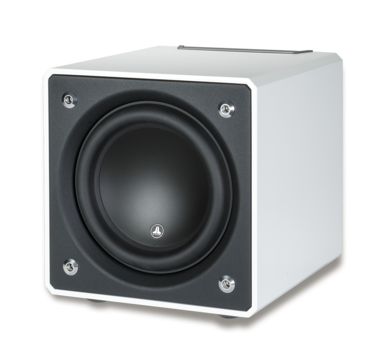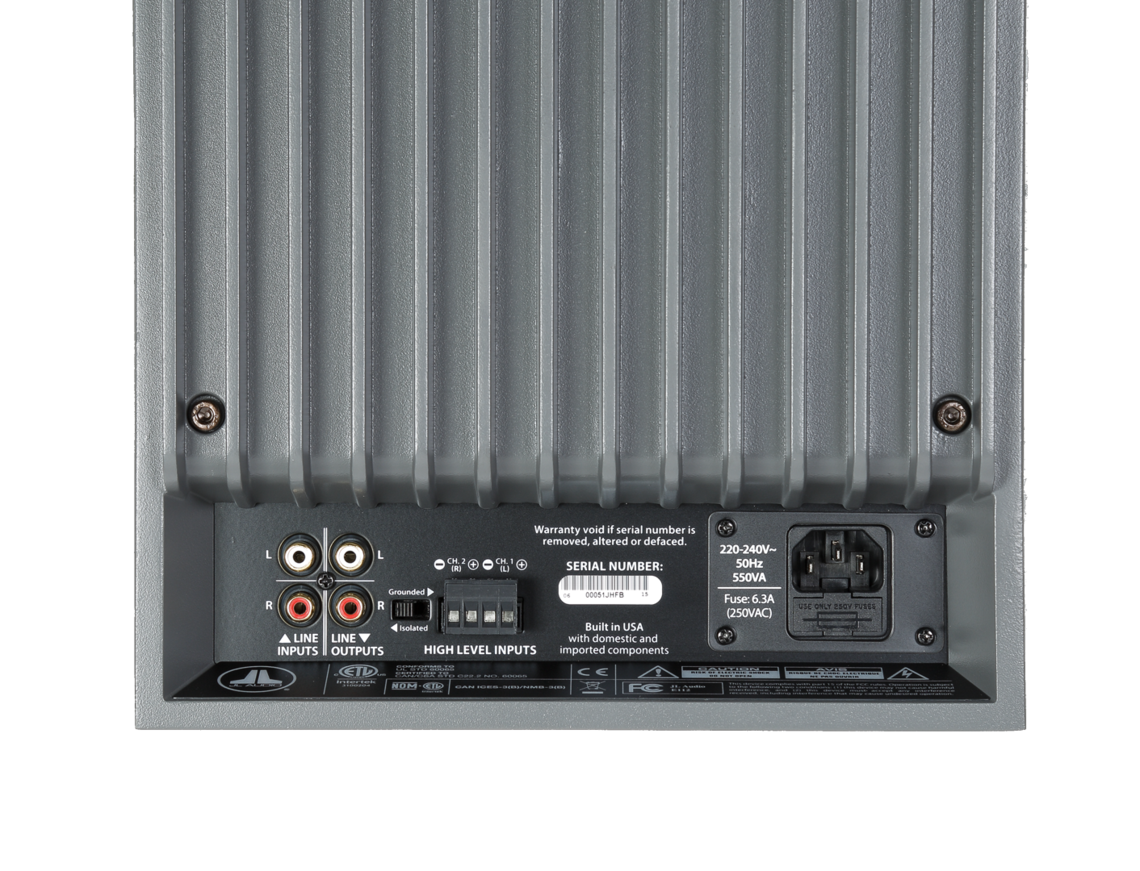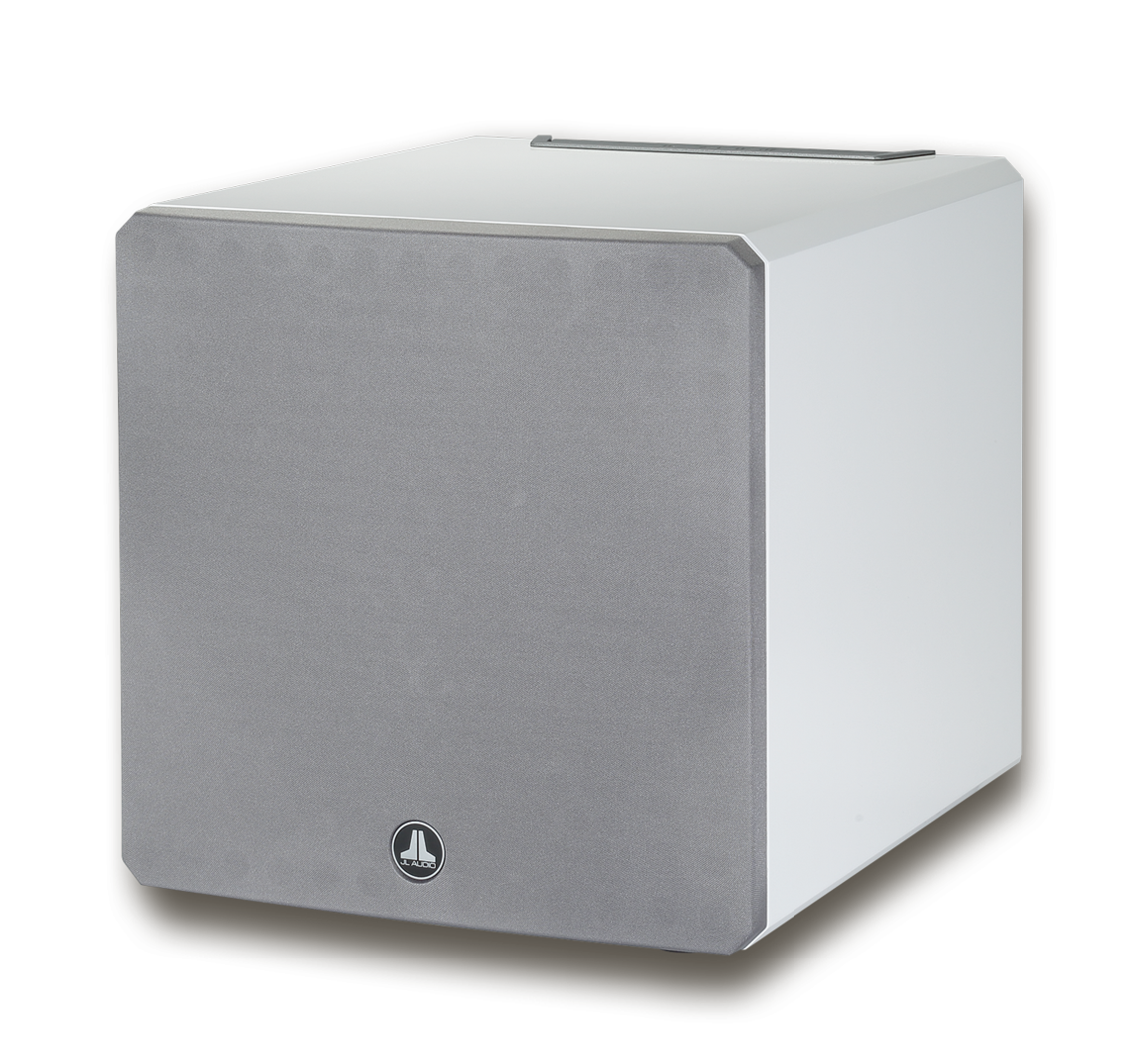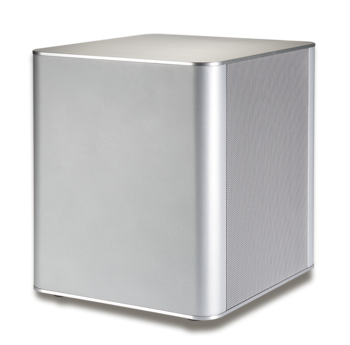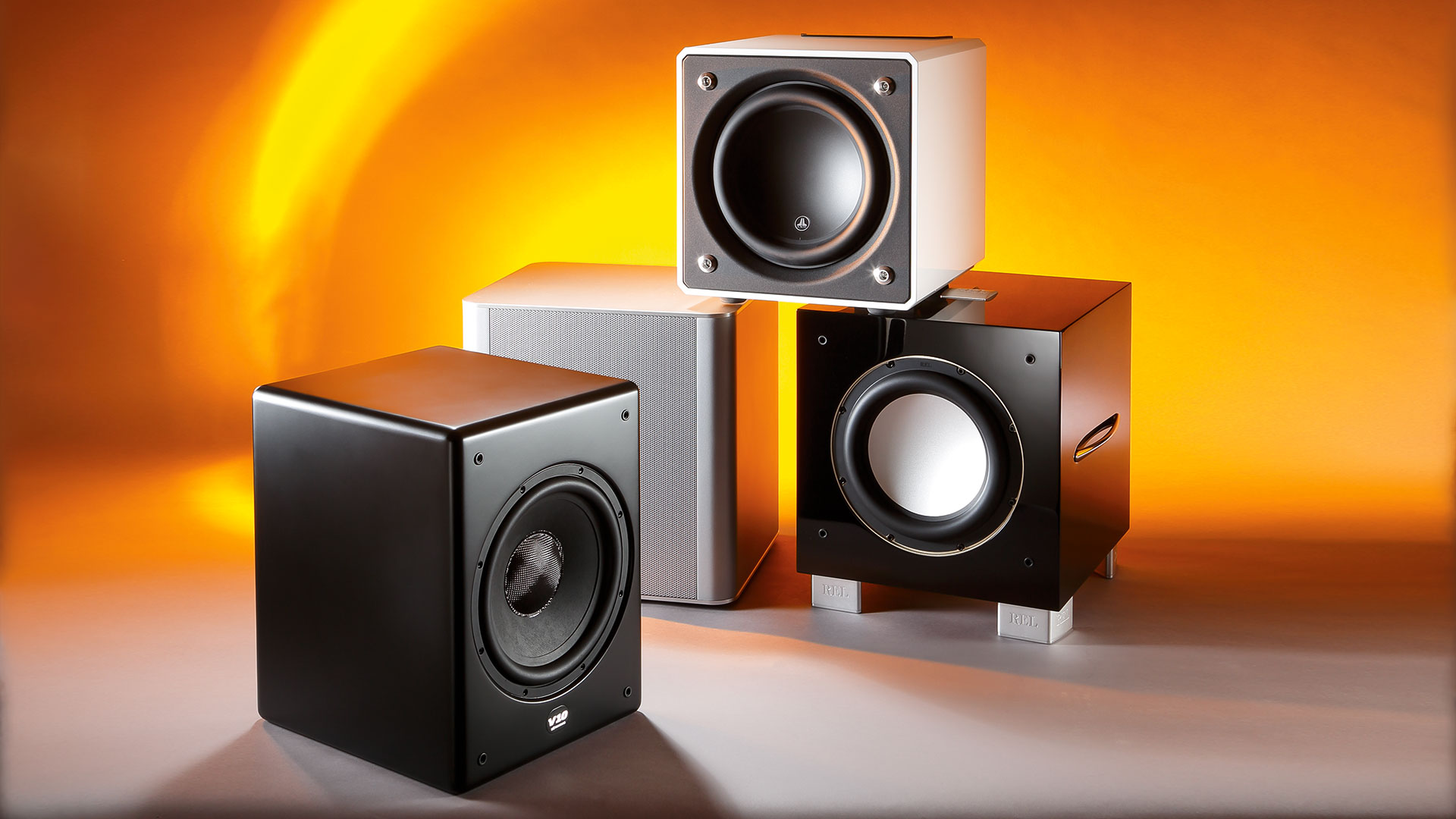
Special
Subwoofer Reviews
Subwoofers are mystical creatures and only very few people are aware of their benefits and really explore their possibilities. STEREO put four candidates to the test.
Spirits of the deep
Subwoofers are a fundamentally unpopular and underestimated but also highly interesting product genre. They are regarded as ugly “blocks”, which no one wants to be looking at in their living room. Further, they have the dubious reputation of the “unskilled worker”, who is only employed as Plan B to supplement a home cinema or compact speaker setup. For some, the subwoofer is, therefore, nothing more than a “necessary evil” in order to avoid using larger floorstanding speakers.
The misunderstanding could hardly be any bigger than that. In fact, the “spirits of the deep” are very useful also beyond the purpose of supporting deep frequencies or achieving the desired „boom“ in a home cinema.
For example, when it comes to simulating three-dimensionality and to being an additional center of generating sound in order to distribute bass energy more ideally throughout the room. This is due to the fact that resonances are stimulated stronger by a single source of maximum energy than by several sourced of reduced energy. That‘s why one or even two subwoofers can also be beneficial for floorstanding speakers.
Finding evidence is easy. We have put the B&W 606 – a phenomenal compact speaker in its price class – into position for this purpose. The respective active subwoofer was positioned slightly in front of them and adjusted in such a way that it only discreetly supported them in the lower one and a half octaves. Party-mode with hip-hop is of course also possible, but that‘s not what we were looking for in this case. Integration is the key.
Already with quasi-quiet passages, we notice how the atmosphere changed when switching the subwoofer between on and off – and not just marginally! The stage extended noticeably and seemed far bigger, because the human ear connects low frequencies with larger rooms and hence interprets them as such. Even small loudspeakers benefit from this „effect“, which is simply amazing.
It goes without saying that same effect appears somewhat weaker when the main loudspeakers are more voluminous and thus physically capable of more bass themselves. Then the idea of better sound distribution becomes more important, which can contribute to a considerably cleaner reproduction of the lower frequencies. By the way, most of the test candidates have 25-centimetre drivers with a large stroke, very powerful amplifiers and a rather compact enclosure for living room-friendliness and a closed cabinet for better precision. For many, this is an ideal compromise of great universality – just like the prices from 1000 Euro. Internal DSPs/Equalizers ensure that the amplifier power illuminates even the darkest deep-sea frequencies that would be completely of the charts with passive bass speakers of similar volumes. The useful bass aid workers are usually connected via cinch cables to the pre-out of integrated- or pre-amplifiers. REL has always preferred high level, i.e. loudspeaker, outputs.
JL Audio e110
Compact Heavy-weight
With the E series in a sealed system, JL Audio delivers an audio-allrounder par excellence.
The history of JL Audio began as early as the mid-1970s, and it is mainly related to subwoofers, to be more precise to extremely powerful subwoofers in the automotive sector, where conditions of very tight space and goals of immense power and depth are known to contradict each other most diametrically. Only in 2004 did JL Audio conquer the home audio market with its active Fathom and Gotham subwoofers based on the impressive W7 bass drivers. Chief developer and co-founder Lucio Proni continues to play a decisive role in the company's future as CEO.
With a weight of nearly 24 kilograms yet moderately compact dimensions of 36.2 x 34.3 x 41.9 centimeters, the E-Sub 110, which was introduced in 2013 as the smaller of two models, is both ambient-friendly and nevertheless heavy enough to inspire confidence. Its cabinet is entirely sealed, which promises precision due to the stiffness of the air-cushion, but also requires some tricks due to the small volume in order to realize the measured lower cut-off frequency of an enormous 19 Hertz (!). The thick surrounding of the 25 millimeter woofer already reveals the enormously long excursion of the oscillating system, which is driven by a high-performance Class D-amplifier with up to 1200 watts for short periods of time. The built-in filter with Linkwitz-Riley characteristic separates the sub upwards between 25 and 130 Hertz with 24 dB per octave, so according to the fourth order.
While the heat sink is clearly visible, the complete operating terminal is hidden under a narrow panel. The buttons are further designed for rather delicate fingers, which reminded me of the controls of my first receiver, the Onkyo TX-20. However, since you won’t have to deal with it all to often, this is not to be judged negatively. In addition to “On” and “Off”, the main switch of the JL Audio has an “automatic”-position, that awakens it as soon as a signal is applied. That is a practical feature, especially if the sub is placed in a rather inaccessible position in a private home theater.
We also think it makes sense to have a switch that can be used to remove the protective earth in case of having problems with hum, which is quite a common and useful feature in the professional field of studio and stage technology. Absolute phase and polarity (0-280°) can be adjusted separately – whether that is useful or confusing has to be judged subjectively.
Undoubtedly primarily intended for low level control via Cinch/RCA cables (one mono input or two stereo inputs), the E-Sub from Miramar, Florida also offers an alternative plug which, like a kind of luster terminal, also accepts – albeit relatively thin – loudspeaker cables and thus high level signals. The low level audio signals can also be passed on via Cinch.
Takes your breath away
In the listening room, the JL Audio presented itself from its absolute best side. Deep black and rumbling it descends into the bass-catacombs below 20 Hertz where only very few subwoofers reach, let alone still make an impact. When I read 25 Hertz as the specification of the lower crossover frequency I had already mumbled "show-off" quietly to myself – apparently prematurely. Watching the thick beaded driver working is definitely more fun than you might expect. With Phono we recommend to treat the JL to a subsonic filter in the previous signal path.
JL Audio combines the home cinema enthusiast's desire for pressure, abundance and explosive-spectacular punch with the audiophile's urge for musicality, flow, rhythm and precision, therefore providing a universally valid answer – and it isn’t 42, but E110!
That's exactly what it is. Whether you want to support compact speakers or small to medium-sized, possibly even slightly larger floorstanding speakers, the JL Audio is your man. This subwoofer has stamina, and probably won’t get out of breath easily – but will take it away from any listener!
While in "Four Seasons" it contributes more to the overall picture and is only immediately present when the larger string instruments and tutti come into play, in Bach's organ legacy "Toccata" it makes the amazing opulence of this instrument tangible and comprehensible in its entirety. Just as vibrant as sometimes threatening, the same character shines through with Yello, AC/DC or Ray Brown, and can be called no less than astounding.
Data Sheet JL Audio e110
Subwoofer
JL Audio e110
Price: ca. 2000 € (Last check: 18.02.2019)
Dimensions WxHxD: 34,3 x 37 x 43 cm
Weight: 23.6 kg
Warranty: 3 years
Manufacturer: JL Audio Inc.

General Data
Measurement Values
| Sound pressure characteristic (at 200 mV): | 98 dBSPL |
| Lower cut-off frequency (minimum): | 19 Hz |
| Power consumption Idling: | 20 W |
Stereo Test
Sound Level Subwoofer: 85%
Price/Performance
M&K Sound V10
Music and Cinema
M&K Sound has earned itself a top reputation in studios and cinemas already since 1976.
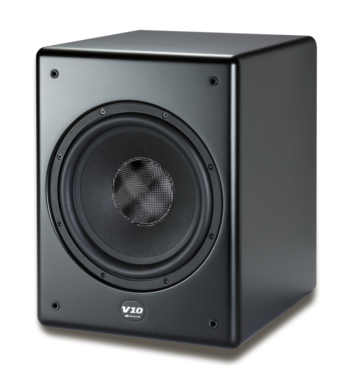
Miller & Kreisel, for which M&K is the abbreviation, are regarded as the inventors of the sub/sat system and almost simultaneously of the active subwoofer. The „Volkswoofer“ is said to have been the very first of its kind with a built-in amplifier. The Danish manufacturer M&K Sound constantly played an important role in cinema and film studios. For example the Star Wars Prequels and the Young Indiana Jones Chronicles were mixed using them, as well as the Blu-ray adaptation for Star Wars I-III. With M&K Sound Hollywood respectively demonstrated the superiority of new sound standards.
Further, also M&K‘s reputation as a music label (RealTime Records) has anything but a bad reputation for developing professional equipment and marketing it to a most demanding clientele. Our subwoofer here is part of the V-Series portfolio and is the medium of three – V8/10/12 – models that M&K Sound developed to delight home cinema and hi-fi fans alike. The numbers in the names represent the diameter of the drivers in inches, i.e. 25 centimeters for the 10 inch V10 model.
„Super Fast Deep Bass“ is emblazoned on the control panel, so the direction the engineer chose is obvious: a long-stroke, fast, powerful and indestructible bass driver with robust suspension sits in the sealed cabinet of the V10 and is powered by a 250 watt unit for top performance.
A feature called „Headroom Maximizer“ is meant to prevent clipping and compression as well as maximize the depth. The measurement shows a full 24 Hertz (-3 dB) as the lower cut-off frequency, which is absolutely excellent for such a relatively compact design – the subwoofer weighs just over 16 kilograms. Already in the STEREO laboratory, the enormous efficiency of the design was noticeable, which generated a full 108 decibels sound pressure at only 200 millivolts input, which is 10 dB more than many competitors with superior amplifiers. The M&K does not have a „ground lift“, because it doesn‘t use the protective earth at all, so the mains socket stays bipolar.
Miracle of Precision
The primary goal of this manufacturer is „Accuracy“, which we interpret as precision, balanced neutrality and naturalism, as well in terms of energy distribution, but also as the aiming for a balance between the brutal honesty of professional studio equipment and the often rather forgiving tuning of home loudspeakers.
The benchmark is the natural sound event that is to be reproduced as free of loss, discoloration and distortion as possible.
And, in fact, the V10 manages this nearly as perfectly as the description promises in our STEREO listening room, together with the compact B&W 606 and the floorstanding Monitor Audio Gold 200.
The Dane, with its black finish, was indeed very fast and drew surprisingly precise and easy to follow textures in Supertramp‘s „School“ (Blu-ray „Live in Paris“).
Its ability to integrate is superb, as it blends in discreetly and with excellent timing, while never getting carried away. This leads, if at all, to a very slight advantage of the M&K Sound V10 in music and transient reproduction, but also to a minimal disadvantage in rendering film effects such as dramatically rumbling explosions, which could possibly benefit of a touch more pressure and power.
Certainly everybody has his own preferences in that regard, however in this shootout these small differences come very close to hairsplitting, because we are talking about finest nuances. The value offered here for 1100 Euros is substantial, even in home cinema, of which the author was of course able to convince himself first hand. Very impressive performance!
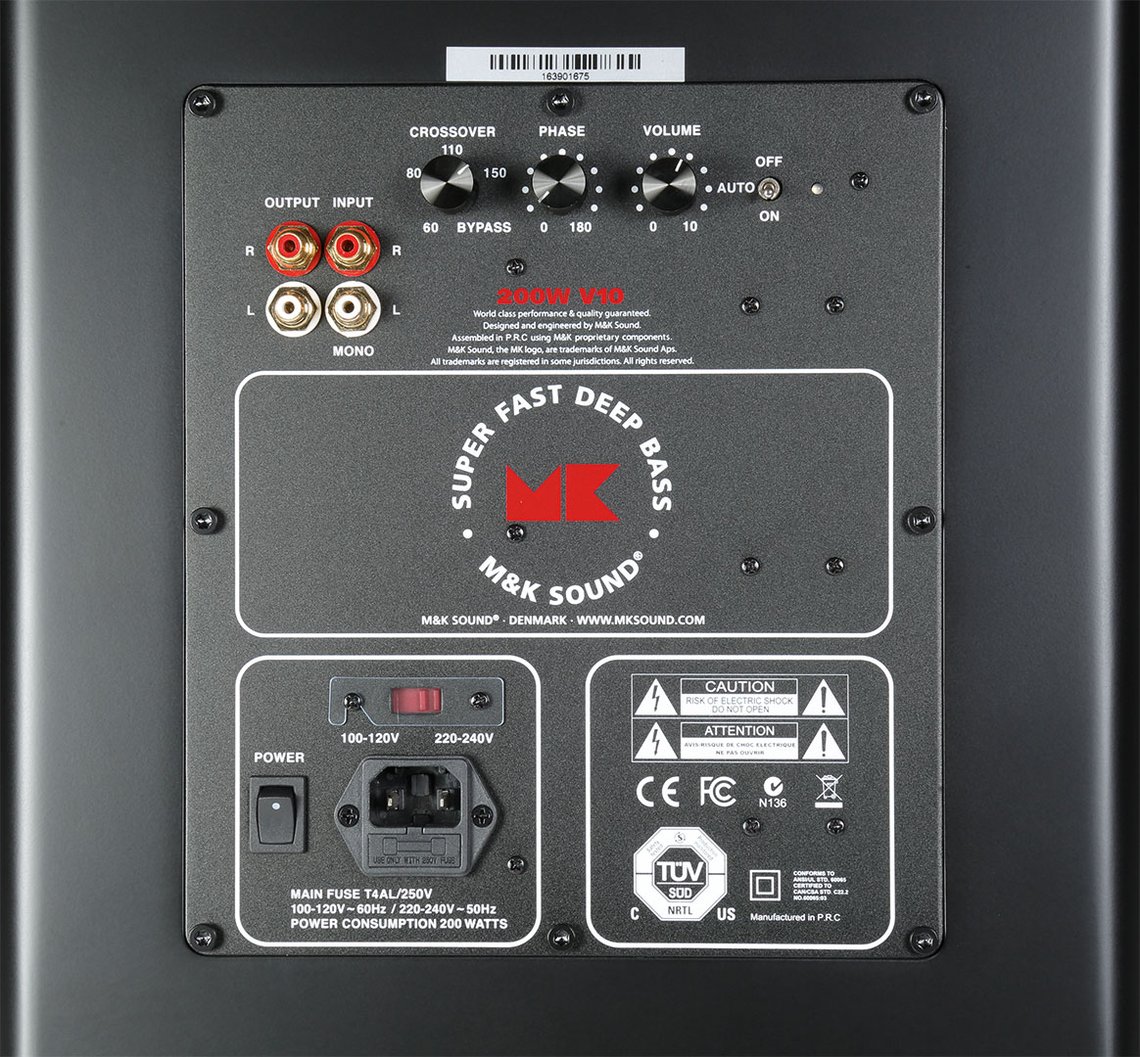
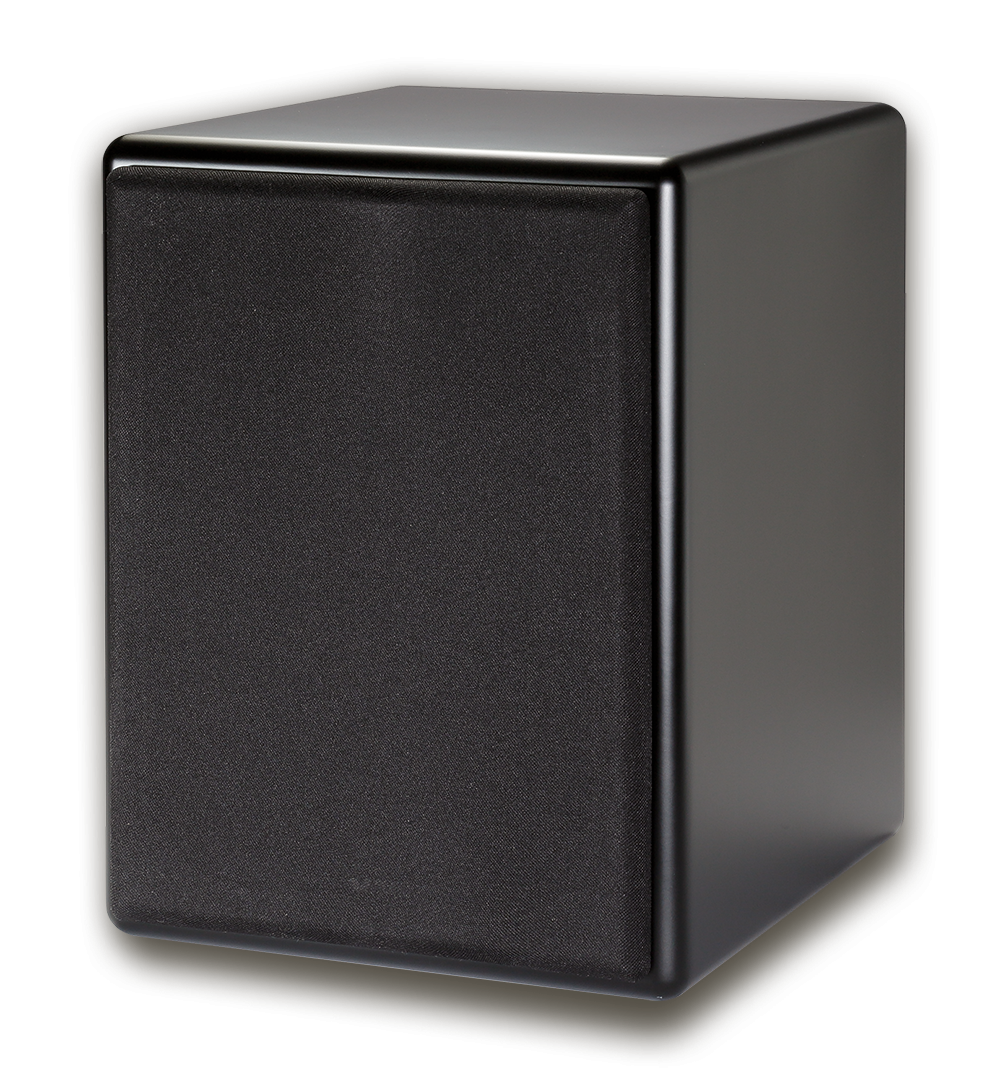
Data Sheet M&K Sound V10
Subwoofer
M&K Sound V10
Price: from 1100 € (Last check: 18.02.2019)
Dimensions WxHxD: 32 x 41 x 38 cm
Weight: 16.3 kg
Warranty: 5 years (bei Registrierung)
Manufacturer: M&K Sound

General Data
Measurement Values
| Sound pressure characteristic (at 200 mV): | 108.5 dBSPL |
| Lower cut-off frequency (minimum): | 24 Hz |
| Power consumption Idling: | 8 W |
Stereo Test
Sound Level Subwoofer: 75%
Price/Performance
Piega PS 101
Cubic Art
Aluminum is Piega‘s material of choice – also for the PS 101 subwoofer.
Quite voluminous, but nevertheless pretty and attractively shaped the Swiss subwoofer presents itself. However, simply labeling it as a beauty-queen or a design piece would be ignoring reality. Even though the very well finished and cleanly varnished MDF cabinet, which is reinforced on the top and bottom with aluminum panels, can admittedly give this impression. For cost reasons the contenders used traditional cabinet materials, as with aluminum the desired retail price would not have been possible. As far as the bass driver is concerned, the developers from Lake Zurich have invested lots of effort in order to combat the accusation of having developed a women‘s speaker. So they prepared a requirement profile and discussed it with their favorite chassis supplier. The result was an arrangement with two very stiff bass-membranes, each measuring 22 centimeters and being attached on the sides. The carbon-stiffened paper-membranes have a large stroke and a very potent drive, which is why they manage with the relatively modest continuous amplifier power of around 150 watts generated in AB mode.
There is enough „horsepower“ to shine in hi-fi as well as home cinema setups, for both of which there are connections available. If you have an AV receiver, you can therefore bypass the sub’s crossover this way, while also loudspeaker/high-level inputs can be found to receive signals from an integrated- or power amplifier, thus passing on the sound character of the amplifier to the subwoofer. The connected satellites can be cut-off downwards in three stages between 60 and 100 Hertz. Here, trial and error is the best way. There is certainly enough leeway for compact as well as floorstanding loudspeakers. We would recommend to cutting the load on compact speakers a little earlier, i.e. already at higher frequencies – then they usually play much more dynamically and cleaner.
25 Kilos of nearly unlimited pressure
The other connectivity options correspond to what you‘d expect nowadays: level control, a crossover control to adjust the 101‘s upper cut-off frequency, a phase toggle switch, and an automatic switch-on function to immediately awaken the subwoofer as soon as a signal is recognized.
The instruction manual, however, is a weak spot of this subwoofer. Apparently the company from Horgen assumes that their customers won’t deal with delivery and installation themselves, but leave this to their experienced dealer. We ourselves are not so sure about this assumption and would therefore appreciate it if we could find detailed instructions with practical tips and possibly even a test CD included in the scope of delivery. That way, with a little time and patience, customers could determine the perfect setup in their listening room all by themselves with a manageable amount of effort. And although the nearly 25 kilos might indeed seem to be an obstacle, we are sure that a serious music lover wouldn’t mind that much to move the sub back and forth a little here and there.
In some countries a subwoofer is sold for almost every loudspeaker, while in this country they are only regarded as indispensable by home cinema freaks. However, anyone who has ever had the pleasure of listening to their jaws dropping when the first tones sounded from a perfectly integrated subwoofer is certainly going to ask themselves why. The „more“ in space, dynamics and serenity, which can immediately be felt even by beginners, combined with a significantly increased transparency for fine details in the fundamental frequencies, is absolutely spectacular. Such a spectacle does, in fact, cast doubt on the usefulness of some other accessories.
The Piega did very well with both the small and affordable B&W 606 as well as Monitor Audio’s Gold 200. Connected to Audionet‘s SAM using speaker cables and Piega‘s high level inputs, it proved that it can generate almost unlimited pressure, without slightest traces of distortion.
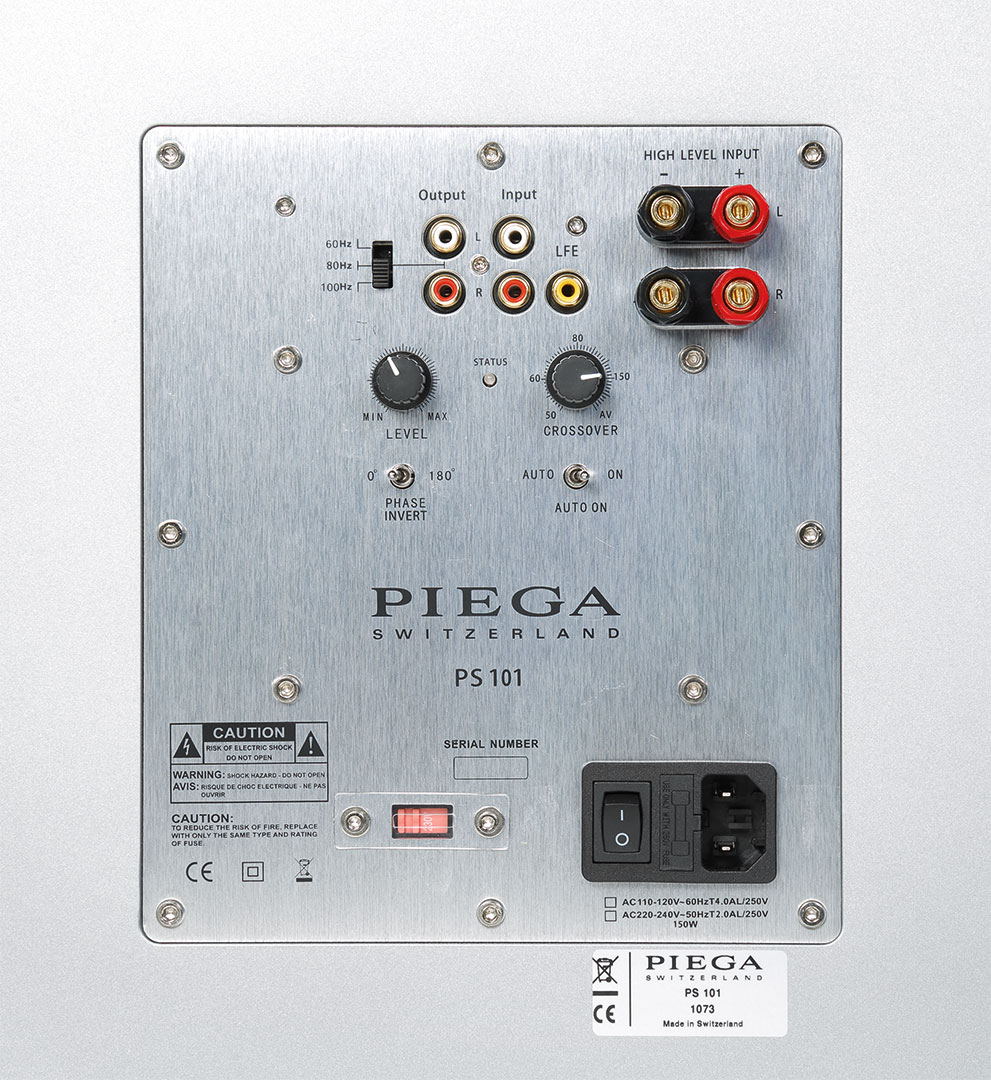
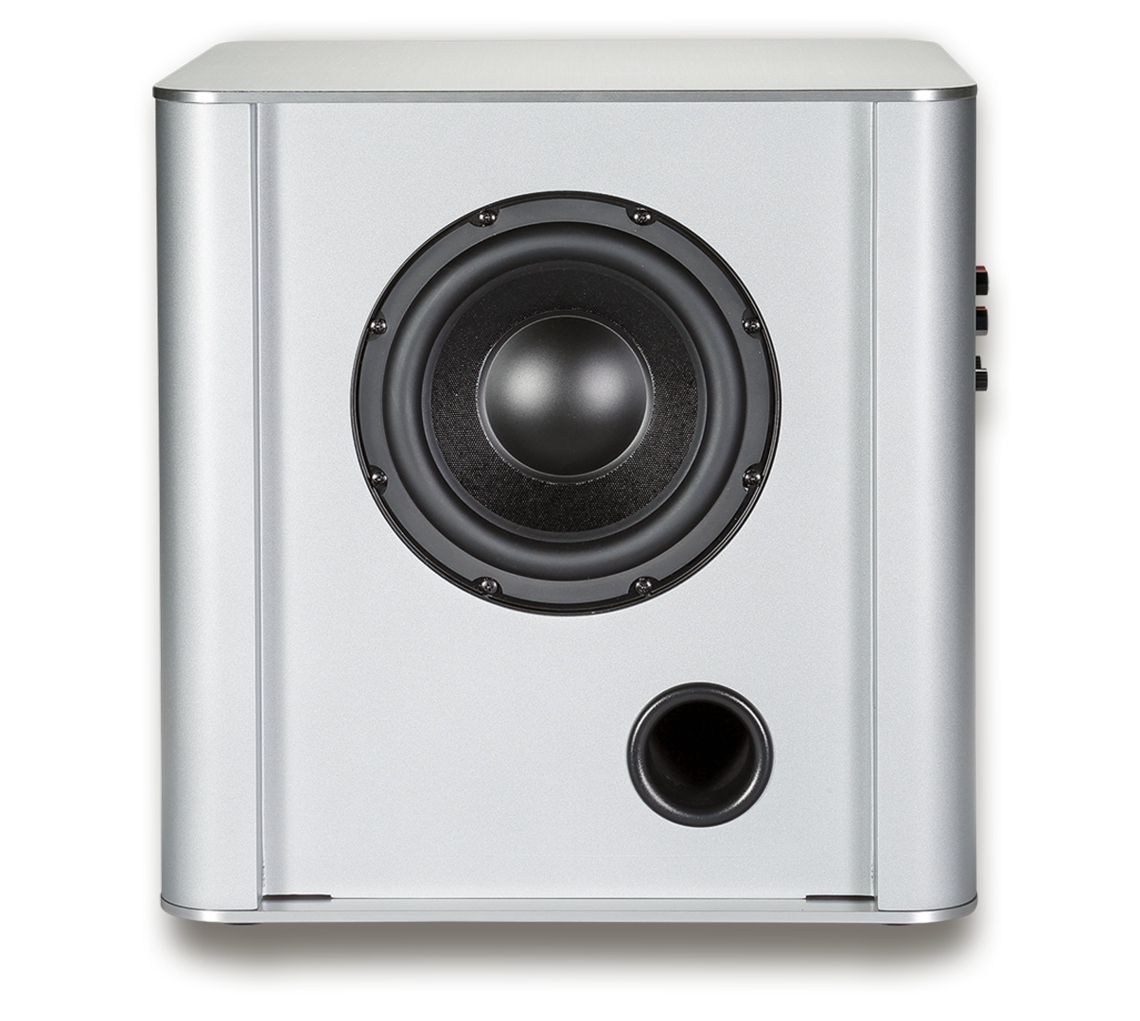
Data Sheet Piega PS 101
Subwoofer
Piega PS 101
Price: from 1950 € (Last check: 15.02.2019)
Dimensions WxHxD: 36 x 43 x 43 cm
Warranty: 6 years (2 Jahre Elektronik)
Manufacturer: Piega

General Data
Measurement Values
| Sound pressure characteristic (2.83 V/m): | 106.4 dBSPL |
| Lower cut-off frequency (-3dBSPL): | 26 Hz |
| Distortion factor at 63/3k/10k Hz: | 0.4/0.2/0.8 % |
| Power consumption Idling: | 8.4 W |
Stereo Test
Sound Level Subwoofer: 83%
Price/Performance
REL S3
The Specialist
REL‘s business model is as simple as it is unusual: they only build subwoofers. These are, however, also of the highest quality.
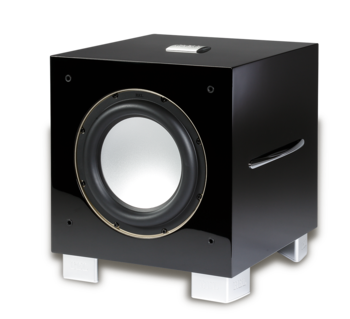
The specialist from the USA, who has its subwoofers built by an appropriate supplier in China and subjected to an additional final inspection in England, has so far resisted all temptations to build something other than subwoofers. This chutzpah of stubbornly sticking to a concept that has been recognized as the right one is rare. Especially as in economically turbulent times this can lead to considerable fluctuations in revenues and profit. But John Hunter, head and heart of the company, kept focused. He lost his heart to subwoofers many years ago during a demonstration, when he realized that, if they are properly matched and reproduced with proper timing, deep frequencies mean so much more than additional pressure hitting the stomach area.
Several decades have passed since then in which Hunter could not be dissuaded from his course: the drivers are built of as high a quality and as reliably as possible and they can only be found at REL; use of extremely stable cabinets; renunciation of an automatic calibration by means of extensive equalizer and DSP functions, as they have become so en vogue in recent years. Also no traditional bass reflex port is employed but instead a large passive membrane with a diameter of 30 centimeter that radiates to the floor and supports the 25 centimeter long-stroke bass. The fixed feet guarantee the desired distance to the floor.
Extensive Manual
On top of all that, REL also goes its own way for the setting up and connecting its subwoofers – the unambiguous recommendation is: place your subwoofer in the corner of your room and take advantage of the resulting nine decibels of volume increase. The manual also provides some well-founded information on how to adjust the volume. First determine the correct phase setting: the one that makes the bass sound louder at the listening position is correct. The next step is to adjust the working range of the sub and satellites, using the crossover control so that the two overlap audibly when the program is bass intensive. Then use the level control on the sub to adjust the volume to the same level as the satellites. Then check the phase again – louder wins. Now pull the sub slowly and evenly out of the corner of your room until it sounds louder, deeper and more powerful. The fine tuning is done by turning the sub, again until the highest possible level is reached. These are all the most important points. However, also the fine tuning of the crossover frequency and the volume of the S3 is explained in detail in the manual: the higher the subwoofer runs, the lower the level should be, is the rule of thumb – absolutely exemplary and unfortunately not a matter of fact.
Another indisputable recommendation from REL is: whenever possible, tap the signal at the speaker terminals of the amplifier to let its sound character flow into that of the subwoofer. For the cases where this is not desired or possible for whatever reason, the very detailed manual offers illustrated information on alternative connections. A ten meter long cable is included, which is connected to the subwoofer by means of a Speakon connector. An option for connection via Cinch is also on board, as well as even a wireless variant, which is, however, dependent on an in-house wireless module. „This was the only way to meet our quality standards,“ REL says. The standby function can be completely bridged. In terms of sound, none of the other participants can top the American. Once the instructions in the manual have been put into practice, the bass reaches very low, sounds crisp and precise with good punch, while blending in well with the overall sound.
The REL can also play quite loud, so that home cinema applications should be no problem. Their tips for setup and positioning are by the way worthwhile trying out with other subs – the more care you take in advance, the less you’ll have to try “saving” with DSP equalizing later. The REL initially requires a bit more work, but then rewards you with really convincing sound.
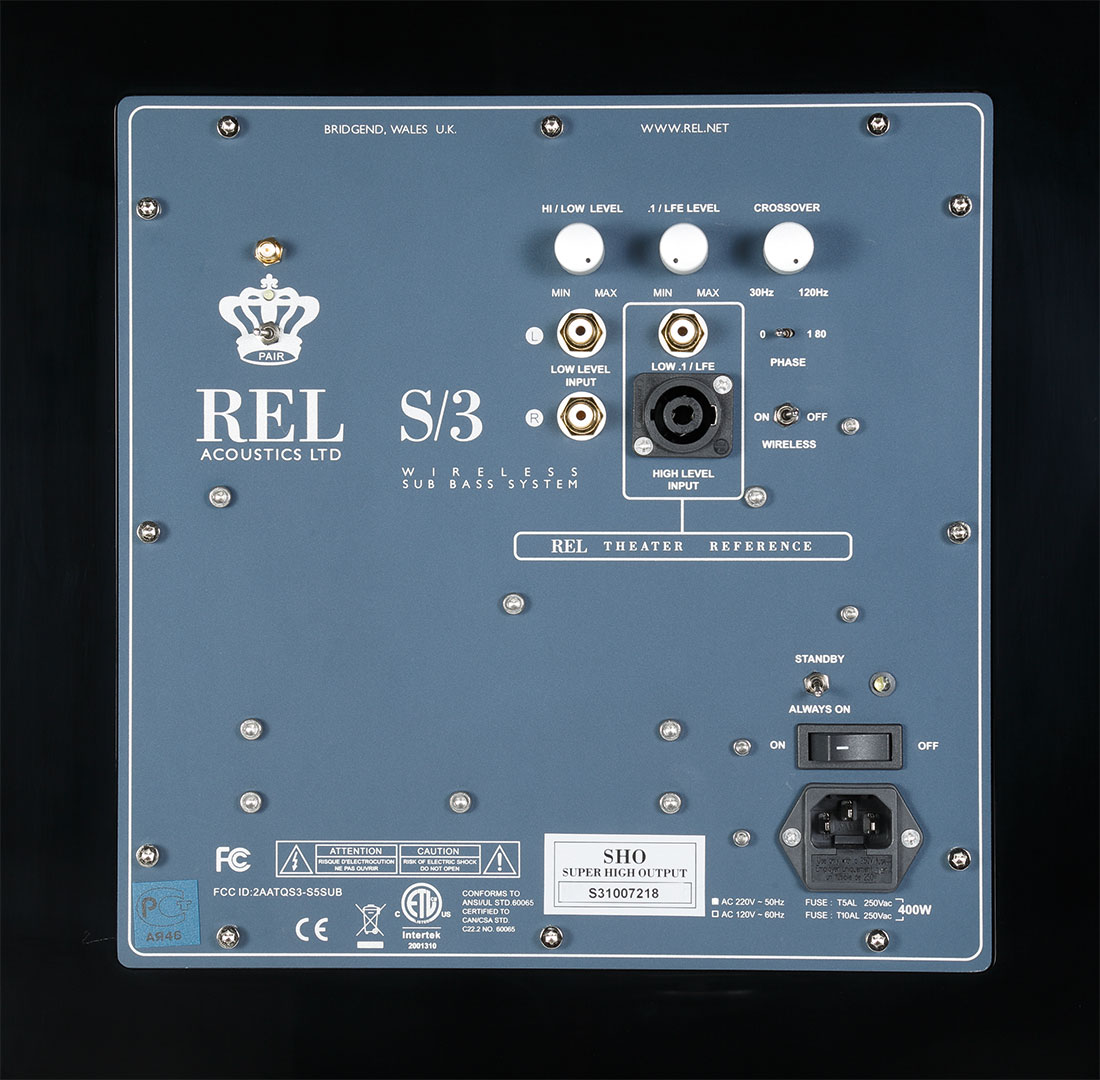
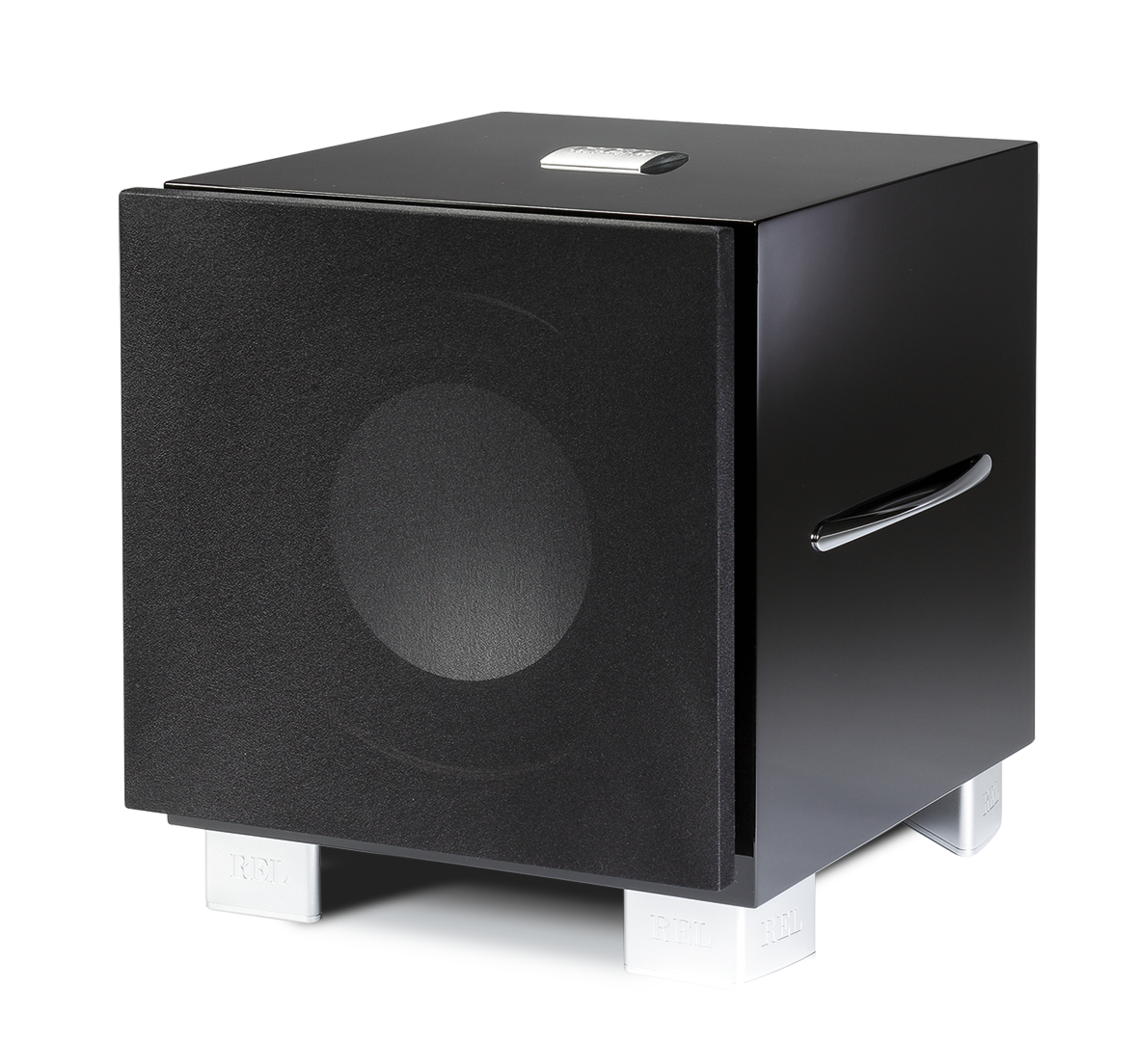
Data Sheet REL S3
Subwoofer
REL S3
Price: ca. 2000 € (Last check: 19.02.2019)
Dimensions WxHxD: 37 x 43 x 43 cm
Warranty: 3 years
Manufacturer: REL Acoustics

General Data
Measurement Values
| Lower cut-off frequency (-3dBSPL): | 23 Hz |
| Distortion factor at 63/3k/10k Hz: | 0.6/0.3/1.1 % |
| Sound pressure characteristic (at 200 mV): | 94.1 dBSPL |
| Power consumption Idling: | 17.2 W |
Stereo Test
Sound Level Subwoofer: 85%
Price/Performance
Tips for Subwoofer Positioning
As long as we are not talking about dipole subwoofers, for which somewhat different rules apply, an active sub can indeed be positioned in a corner to gain three decibels of sound pressure through each boundary surface. That equals floor +3 dB, right wall +3 dB and left wall +3 dB. This increase in pressure level, obtained without the use of money, saves amplifier power but is no guarantee for clarity and precision.
The other extreme would be a positioning in the center of the room, where the bass will have the least „impact“. Ultimately, only trial and error can guarantee success. We would start by placing the sub in one line with the main loudspeakers or slightly in front of them. Another popular method is to place it in the listening position, then walk around the room and place the sub where you get the best sound impression. Decoupling ensures peaceful coexistence with your neighbors.
Absolute Phase
In nature, a sound is always „in phase“ and should therefore be reproduced electroacoustically with the diaphragm moving forward. Depending on the spatial distance and electronic delay, however, it may make sense to operate the subwoofer in reverse phase to synchronize it more harmoniously with the main speakers.
Tips for Subwoofer Setup
For this task it is best to have a second pair of hands available, because then one person can hear in the listening position, while the other – unless there is a remote control – sets the parameters on the subwoofer. These are polarity, crossover frequency and level. The polarity is then set correctly when the maximum bass level arrives at the listening position at an otherwise equal, medium level.
Often you only have the choice between two positions 0 and 180°, which is usually sufficient. However, sometimes you can also choose stepless, whereby the optimum is more accurate, but also much more difficult to determine. The crossover frequency is chosen according to the speakers playing along. If these are large and have a potent bass themselves – indicated at about 35 Hertz at -3 dB – the crossover of the sub should be set rather low.
If, on the other hand, compact speakers are in use, which are specified at e.g. 70 Hertz at -3 dB, one should use exactly this specified frequency for the sub’s crossover. And since the professional often adjusts the bass a little too strongly and the newbie usually much too strongly, you should take time for the level of the subwoofer and readjust it critically over the next few days and weeks. In fact, for a good integration the subwoofer should not be heard individually at all. Rather, it should hardly be noticeable and integrated seamlessly into the overall picture.
 MAGAZINE
MAGAZINE